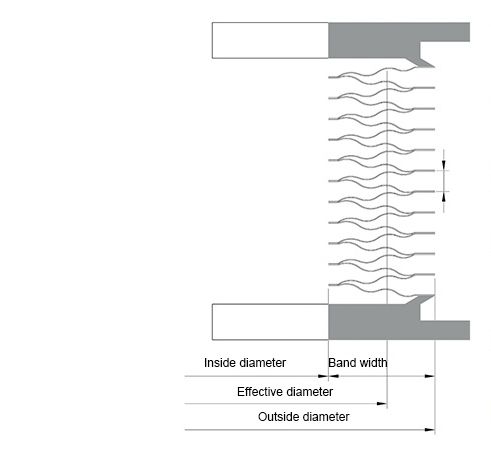Edge Welded Bellows: Structure, Design, and Applications

Edge welded bellows are precision-engineered components widely used in industries requiring high-performance sealing solutions. Their unique design ensures leak-proof functionality, durability, and resistance to extreme conditions. Below, we explore their structure, manufacturing process, and key characteristics.
Key Components
Flange (01): Custom-shaped to meet requirements, with preset grooves on the periphery and edge. Welded to bellows, preferably using the same material.
Bellows (02): Formed by stamping metal plates into circular shapes. Thickness and profile vary based on usage conditions.
Pitch (03): Influences pressure resistance, durability, and spring rate.
Annule Width (04): Affects flexibility, pressure resistance, and spring rate. Calculated as (OD – ID)/2.
Effective Diameter (05): Defined as (OD + ID)/2.
Outside Diameter (06): Includes labeled dimensions like ID, band width, and effective diameter.
Welding & Testing
Welding Methods:
- Electron Beam (EBW)
- Gas Tungsten Arc Welding (GTAW)
- Laser
- MBPA (PAW MBPA)
- Orbital TIG Arc
Testing Range:
- Life cycles (pressure/temperature indicators)
- Load and mass spectrometer tests (MST)
- Metallurgy and pressure tests (burst/pulse)
Key Characteristics
- Ultra-low leak rate (1×10-11 std. cc He/sec)
- Long lifespan (>1 million cycles)
- High/low temperature resistance
- Low gas output rate
- Corrosion-resistant
Design & Manufacturing
Design Tools: BECAX™ (CAD), FEA, and modeling.
Cleanroom Standards: Expandable to Class 100, 1000, or 10,000.
We produce standard and custom edge welded bellows tailored to specific industrial needs, ensuring precision and reliability.
Categories: Technology
Tags: